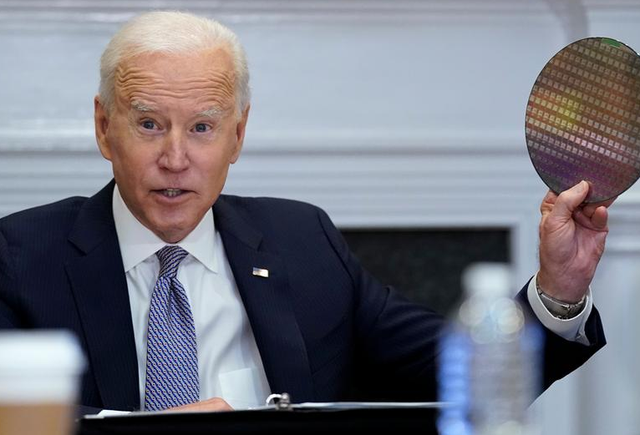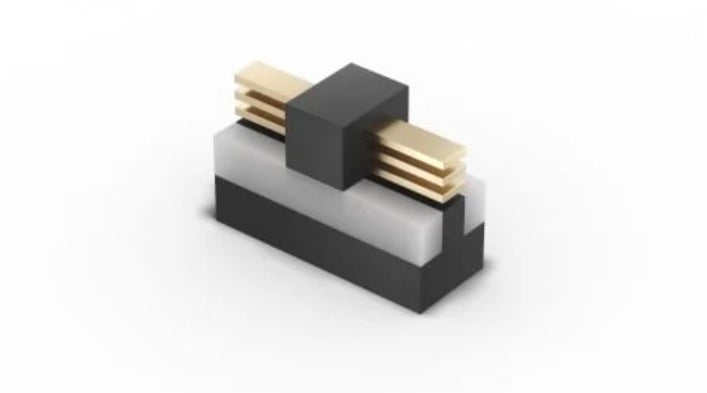continue......
Q: How many prepaid orders were placed before Changcun?
A: I don't know much about longevity.
Q: Changxin has no undelivered orders with advance payment at all?
A: Yes, the Changxin No. 2 factory has not been built yet. It was just a part of the discussion recently, but no payment was made.
Q: How does Lam communicate with Changxin about the follow-up?
A: Waiting for the details on the 12th, but not so optimistic. Lam's internal company believes that it is necessary to prepare for layoffs this time, and Lam has hundreds of people in the long run.
Q: Can the production line that is already running in the first phase of Changxin still be supported?
A: Americans can't come again, and Changxin can no longer get any technical support from the US headquarters. Now, the resignation procedures that Changxin and Changcun Americans in their fabs have to do today have only two options: giving up their American citizenship and resigning.
Q: Changxin has given a clear 18nm node. Can Changxin still get 19nm equipment from Lam?
A: Basically can't get it. Although the limit is 18nm, to supply Changxin with equipment, Changxin needs to sign an agreement, and Changxin, Changcun, and SMIC will not sign. The United States will basically not agree to apply for permission. For equipment that uses American technology and comes from American factories, an agreement must be signed to ensure that the products will not be used in military and other fields, and will not be used below 18nm. Once violated, the US government will compensate a large amount of money.
Q: Are these practices a clear statement of the order placed in the United States, or are the companies deduced by themselves?
A: These general directions are correct. Americans cannot support them. The technologies and equipment controlled by the United States cannot be used in Logic, DRAM, and NAND. In addition to SMIC and Huali, other logics are also affected. This time, more fabs are affected. It is estimated that the final result may be Fujian Jinhua.
Q: Lam also withdraws from SMIC South's support team? But SMIC South couldn't get Lam's equipment?
A: Yes. SMIC South does more 7nm and 14nm. Although SMIC South can't get Lam's equipment, there are still a small number of people doing services in SMIC South.
Q: Is there any clear feedback from the United States now? What support can be given to customers after the 12th?
A: Not yet. After the 12th, and before the 12th, you can follow Lam's own understanding.
Q: Are there any American people in the Lam team? What will be the consequences if the American personnel continue to be in Changxin?
A: Americans will not take this risk. If American personnel continue to develop in Changxin, they will face the risk of being arrested when they return to the United States or pass through a country that can be extradited by the United States.
Q: From the perspective of equipment companies, how big is the impact of Americans not being able to support? Lam itself installed and maintained the personnel or Chinese?
A: Although the maintenance and installation personnel are Chinese, the technology is from the United States. Lam cannot do without the support of the US headquarters during service.
Q: Will it affect the operation of Changxin's existing production capacity?
A: Only from the perspective of support services, the impact is not significant. Changxin and Changcun can absorb the personnel laid off by Lam. There is no problem in installation, but the consequences of not having spare parts should be considered.
Q: After being banned, Fujian Jinhua has still formed some production capacity, and is even expanding production?
A: When it was banned, Fujian Jinhua had already installed some machines. The existing production capacity is mainly the first batch of equipment. It took more than half a year for the first batch of equipment to be installed on the site before it was banned. Later, some second-hand equipment was bought from outside, but not much.
Q: Fujian Jinhua can still produce normally after being banned, and there is no problem with parts?
A: All parts can be obtained from Taiwan and South Korea. Lam and Applied Materials do not produce these by themselves. Fujian Jinhua can find OEM channels to obtain them.
After the ban on Fujian Jinhua came out, there was absolutely no new equipment from Lam, and none of Lam and Applied Materials stayed in Jinhua, and they all evacuated and could not be remotely. Jinhua has absolutely no connection with American companies. What Jinhua did was not as sophisticated as Changcun and Changxin. Jinhua had already bought the technology from UMC at that time.
Q: Now, as long as you are American, it is illegal to support these companies in any form anywhere in the world?
A: Yes.
Q: Will getting a U.S. green card be affected?
A: Should not be affected.
Q: For Changxin, which one is the most deadly, and there is no alternative at all?
A: In the short term, it will be difficult for Changxin's fab to build further down, and there is no way to do it without American technology. ASML's lithography machine also has American technology, Zhongwei's etching is not 100% substituted for Lam, and thin-film lithography is not 100% substituted. The second factory expanded by Changxin is based on the production line of the first factory, unless it has a domestic production line like ICRD in Jiading, but the production in Jiading has not yet reached the level of mass production.
Q: Does Lam have equipment at ICRD?
A: Yes. ICRD has a domestic line and a European and American line. When it comes to European and American lines, there is the same machine benchmarking.
Q: Are Americans who are not R&D personnel in the regulated category?
A: It doesn't have to be research and development, and management personnel are also considered.
Q: Some domestic companies are owned by American nationals. Will these companies be shut down?
A: Certainly not American. I don't know what China Microelectronics is going to do now. Yin Zhiyao will either choose to give up his American citizenship, or he will only take a green card instead of American citizenship. It is unlikely that China Microelectronics will give up the domestic market. If China Micro sells equipment to these banned companies, it will definitely be sanctioned.
Q: China is a huge market, but it actually has a great impact on American companies?
A: The market demand for logic, storage, etc. exists objectively. U.S. companies cannot export. Japan and South Korea have opportunities, which is beneficial to U.S. allies. In the short term, it will cause losses to American companies, but in the long run, it will be beneficial to the United States.
Q: Is it possible to expand the scope in the future?
A: This time, the coverage has been very wide, and the impact is very large. The United States doesn't look down on car regulations, so I can't help it.
Q: Is it possible for the American business community to offer opinions?
A: The CEO of Lam Company also knows that the loss is huge, but this is the policy of the country, and complaining is useless.
On the 12th, we will formally communicate with customers about the way of service and supply in the future.
Q: As long as there is a little bit of technology from the United States, will it be tracked? What is the attitude of Japan and Taiwan?
A: If the equipment is assembled and produced in Japan, the equipment can be sold normally. It does not matter if 10%-20% of the parts on the machine are produced in the United States.
美国于上周五对华进行新一轮制裁,此次制裁的力度是2018年以来更为严厉的一次。制裁发布后,迫于美政策压力,在国内的美国籍技术人员和管理人员开始撤离。本文是一位美国半导体设备商LAM在国内的工作人员分享的这几天的情况,对话
icbom.com




